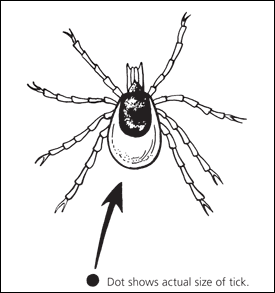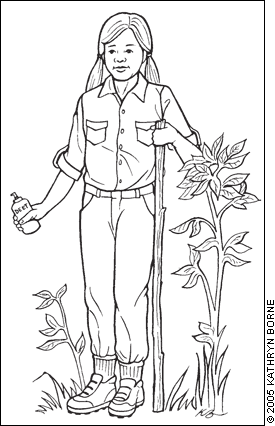
Am Fam Physician. 2005;71(12):2331-2332
See related article on tick-borne disease.
Avoiding ticks and places where ticks may be is the best way to keep from getting sick from a tick bite. After being outside in places with ticks, carefully check yourself and family members for ticks (Figure 1). Children should be checked with extra care. Properly and quickly removing ticks will help lower your chances of getting sick.

Steps to Keep Ticks Off of You
When you are outside, you cannot stay away from all ticks. But there are some things you can do to help (Figure 2):
Put bug spray with permethrin on your boots and clothes. Sprays with DEET added can be used on the skin. Be careful when putting it on children. Too much DEET can cause a skin rash.
Wear light-colored clothes so it is easier to see any ticks.
Tuck your pant legs into your socks to keep ticks from getting under your clothes.
Consider wearing high rubber boots.

Removing Attached Ticks
Use fine-tipped (needle-nose) tweezers or protect your fingers with a tissue, paper towel, or rubber gloves. Do not use your bare hands.
Grab the tick as close to your skin as possible. Pull up with steady, even pressure. Do not twist or jerk the tick; this may cause the mouthparts to break off and stay in your skin. (If this happens, remove the mouthparts with tweezers.) Talk to your doctor if you see any signs of infection. These include redness at bite site, chills, fever, headache, muscle or joint pain, feeling tired, cough, sore throat, and chest pain.